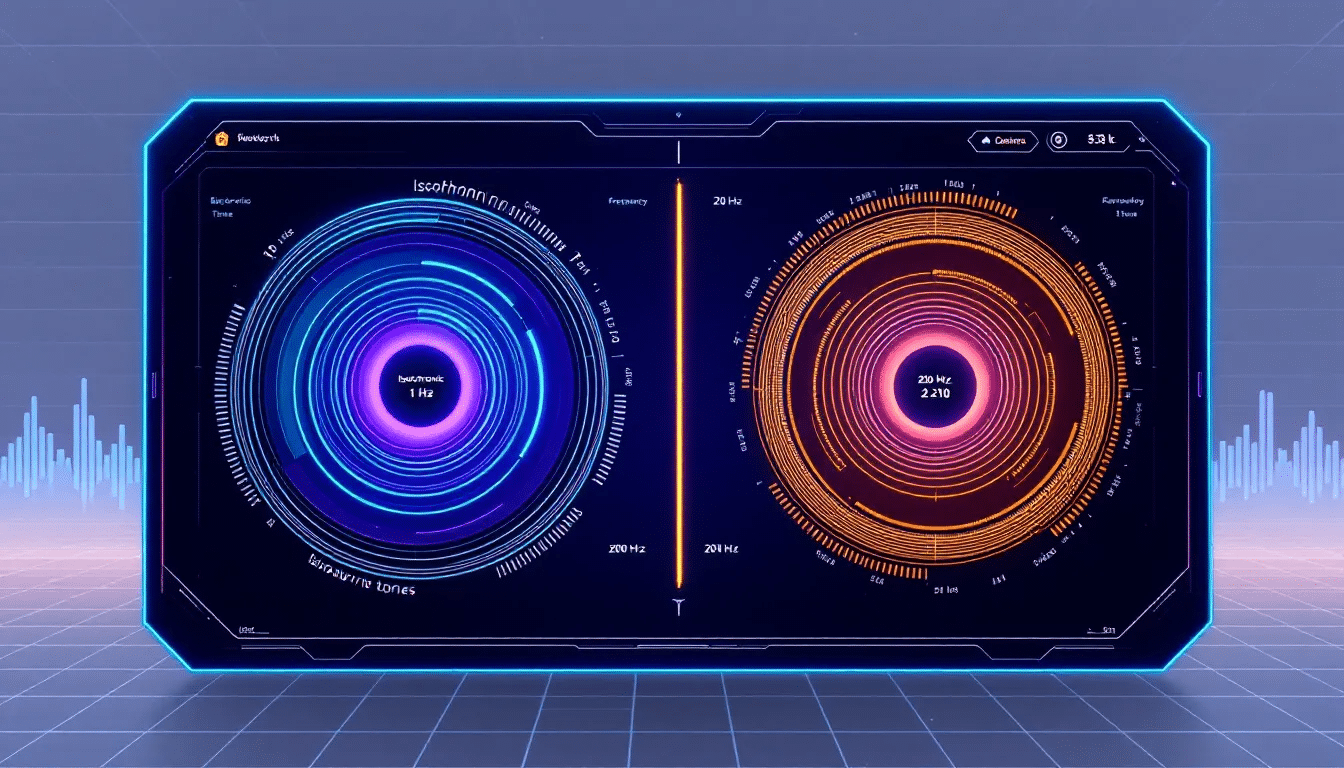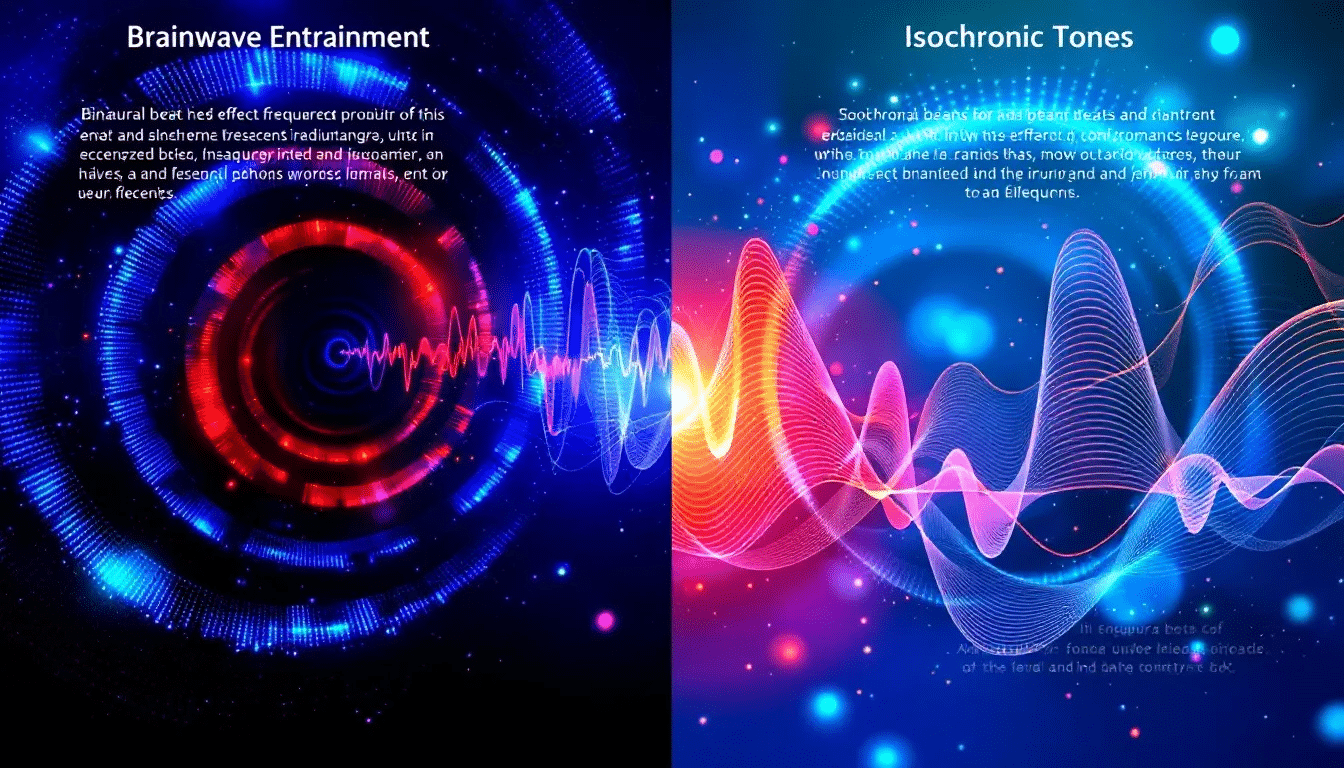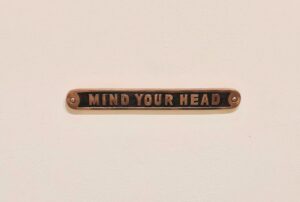Looking to understand the difference between isochronic tones vs binaural beats? Learn how these methods work to synchronize brainwaves and which one might be more effective for your relaxation, focus, or sleep needs.
Understanding the Basics: Isochronic Tones and Binaural Beats

Isochronic tones and binaural beats are two popular methods of brainwave entrainment, a technique used to synchronize brainwave patterns with external auditory stimuli. Isochronic beats are defined by their distinct, clear sound pulses that are turned on and off at regular intervals. Unlike binaural beats, which require stereo headphones, isochronic tones can be played through regular speakers, making them more accessible. Binaural beats or isochronic tones can also influence brainwave patterns. Sine waves are another form of auditory stimulus that can influence brainwave patterns.
On the other hand, binaural beats involve the simultaneous presentation of two slightly different frequencies, one in each ear, creating a perceived third tone within the brain. This phenomenon, known as the auditory illusion, was first brought to light in the late 20th century. Binaural beats require the use of headphones to ensure each one ear receives its specific frequency, which then merges in the brain to form the third tone.
Both methods aim to influence brainwave patterns by manipulating brainwave frequencies, leading to desired mental states. The core principle behind both techniques is brainwave synchronization, where the brain’s electrical activity aligns with the frequency of the auditory stimuli. This synchronization can lead to various mental and physical benefits, from enhanced focus to deep relaxation.
How Isochronic Tones Work
Isochronic tones operate through distinct, clear sound pulses that are rapidly turned on and off. These pulses are designed to influence brain activity by aligning with the brain’s natural frequency. Unlike binaural beats, an isochronic tone does not require headphones, allowing them to be played in various settings without the need for specialized audio equipment. Isochronic tones produce a unique auditory experience that can enhance focus and relaxation. The isochronic tones definition highlights their effectiveness in achieving these benefits.
The specific frequency of the isochronic tones can be adjusted to target different frequency mental states. For instance, lower frequencies can be used for deep relaxation and sleep, while higher frequencies can enhance focus and alertness. Selecting certain frequencies within the appropriate frequency range allows users to tailor their listening experience for distinct frequencies and specific frequencies mental and emotional outcomes.
Isochronic tones are also known for their stronger brainwave entrainment effect compared to binaural beats. This is because the distinct pulsating nature of isochronic tones provides a more direct and immediate impact on brainwave activity. The consistent on-off pattern helps to synchronize brainwaves more effectively, leading to quicker and more noticeable changes in mental states.
The Mechanism of Binaural Beats
Binaural beats work by presenting two distinct tones to each ear through stereo headphones. The brain perceives these two slightly different frequencies and creates a perceived third tone, known as the binaural beat, which reflects the difference between the two frequencies and the beat frequency. This perceived tone typically falls within the range of 1 to 30 Hz, aligning with the brain’s natural EEG frequency bands, thanks to binaural beats technology. The term binaural beats is often used to describe this phenomenon, including the effects of beta waves. Binaural beats create a unique auditory experience that enhances relaxation and focus, which can be understood through the binaural beats definition. Additionally, delta brainwaves play a crucial role in deep sleep and restorative processes.
The process involves the auditory pathway processing the phase differences from the sound waves received by each ear. This integration of sound waves occurs within the brain, rather than through direct interaction of the sound waves themselves. The brain interprets this perceived beat as an oscillating frequency, which can then influence brainwave activity and lead to changes in mental states, including delta waves and theta waves, by affecting the brain’s electrical activity.
Using headphones is crucial for binaural beats to ensure the precise delivery of different frequencies to each ear, creating the desired auditory illusion. This method can be particularly effective for achieving deep relaxation, meditation, and even enhancing cognitive functions by aligning the brain’s electrical activity with the desired frequency. You can also utilize binaural beats to enhance your experience.
Brainwave Entrainment: Comparing Effects

When comparing the effects of isochronic tones and binaural beats, it is essential to consider their impact on brainwave entrainment. Isochronic tones are recognized for creating a stronger brainwave entrainment effect compared to binaural beats. This is due to the distinct and clear sound pulses that provide more direct stimulation to the brain, leading to quicker synchronization of brainwave patterns.
Both techniques can reduce anxiety and enhance focus, making them valuable tools for mental health and wellness. Binaural beats, specifically, can mimic the brain’s natural frequency, promoting relaxation and lowering anxiety levels. The alpha state, linked to relaxation and focus, can be achieved through specific binaural beat frequencies.
Isochronic tones, on the other hand, can target each hemisphere of the brain by applying different frequencies to each side. This allows for a more tailored approach to brainwave entrainment, potentially enhancing mental clarity and reducing stress. Both methods can lead to improved focus, relaxation, and sleep quality, demonstrating their effectiveness in various applications.
Auditory brainwave entrainment methods like binaural beats and isochronic tones have been shown to influence specific brainwave frequencies, leading to various mental health benefits. Understanding the key differences and similarities between these techniques helps users make informed decisions about which method suits their needs.
Applications in Mental Health and Wellness

Isochronic tones and binaural beats have found significant applications in mental health and wellness. Isochronic tones have been linked to significant reductions in anxiety levels during specific interventions, making them a valuable tool in clinical environments for stress relief. These tones can promote deep states of relaxation, which can be particularly beneficial for individuals struggling with anxiety and stress.
Binaural beats, on the other hand, are widely used for stress reduction, enhanced focus, and deeper meditation. They help in reducing anxiety and enhancing relaxation during meditation practices, making them a popular choice for those looking to improve their mental well-being. Both techniques can facilitate better sleep quality, making them popular choices for individuals with insomnia. When considering binaural beats vs other relaxation methods, many find binaural beats to be particularly effective.
The use of Hina, a piece of theta sleep music, exemplifies the effectiveness of combining binaural beats and isochronic tones. Hina’s use of theta frequency is associated with deep relaxation, meditation, and improved sleep quality. Many users of Hina report experiencing deeper states of relaxation and better sleep patterns after consistent listening.
Research also indicates that both binaural beats and isochronic tones can significantly aid in pain perception management, further demonstrating their versatility and effectiveness in enhancing well-being, productivity, and mental health.
Scientific Research and Evidence
Scientific research on isochronic tones and binaural beats presents a mixed bag of findings. Studies indicate that prolonged exposure to auditory stimuli like binaural beats can enhance long-term memory retention and lead to sustained improvements in emotional well-being. However, research findings often reveal limitations in empirical support, necessitating further investigation into their psychological impacts.
Some studies have suggested that binaural beats may not produce measurable changes in brain activity, challenging common assumptions about their effects. A review of studies on binaural beats indicates a significant variation in results, with some confirming the brainwave entrainment hypothesis while others contradict it. These inconsistencies highlight the need for more rigorous and standardized research.
Evident methodological differences in studies investigating binaural beats complicate the ability to draw definitive conclusions regarding their efficacy. Researchers emphasize the need for further research to fully understand the mechanisms and applications of both binaural beats and isochronic tones. Despite these challenges, key studies have shown improvements in reaction time, task accuracy, cognitive enhancement, cognitive flexibility, memory retention, and cognitive function in young adults using binaural beats.
Another study found that binaural beats did not improve memory or attention in older adults, indicating that the effectiveness of these techniques may vary across different age groups. Overall, while the existing research provides some support for the benefits of binaural beats and isochronic tones, more comprehensive studies are needed to validate their effects fully.
Personal Preference and Effectiveness
Personal preference plays a significant role in the effectiveness of binaural beats and isochronic tones. The response to binaural beats can be highly variable, with some users finding them beneficial while others may find them distracting. Some individuals report experiencing brief episodes of anxiety, anger, or confusion after using binaural beats, highlighting the importance of individual differences in auditory preferences.
Isochronic tones, on the other hand, are often found to have a more immediate impact due to their distinct pulsating nature and the presence of two tones, creating a single tone experience. However, some users might find the aggressive sound of isochronic tones less appealing, affecting their overall experience and preference.
Headphone comfort can also significantly affect the effectiveness of binaural beats, while beats or isochronic tones can be enjoyed without headphones, adding another layer to personal preference. Feedback indicates that the effectiveness of isochronic tones is particularly noted in higher frequency ranges, unlike binaural beats.
Ultimately, the choice between binaural beats and isochronic tones depends on personal preference, desired mental states, and the specific benefits one hopes to achieve. Experimenting with both methods can help individuals determine which technique works best for them.
Creating Your Own Audio Files

Creating your own binaural beats and isochronic tones can be a rewarding endeavor. Audacity is a highly recommended tool for producing these auditory stimuli, allowing users to manipulate sound frequencies to create custom audio files. This software provides a user-friendly interface for generating the desired tones and frequencies.
Those who prefer listening rather than creating their own can purchase binaural beats and isochronic tones, often mixed with high-quality music to enhance the listening experience. Each track typically comes with a compressed MP3 audio file and a broadcast quality WAV file, ensuring high-quality audio playback.
Patreon members can access free monthly tutorials and meditation music related to binaural beats and isochronic tones, offering a valuable resource for those looking to explore these techniques further. These tools and resources enable individuals to personalize their auditory experiences for specific mental and emotional outcomes.
Hina: A Case Study in Theta Sleep Music

Hina is a remarkable example of theta sleep music that combines binaural beats and isochronic tones to enhance relaxation and promote deep sleep. This piece of music, composed and recorded with the National Philharmonic Orchestra of Great Britain, offers a unique auditory experience designed to synchronize brainwave activity and facilitate a calming effect.
The combination of binaural beats and isochronic tones in Hina is intended to create a soothing and peaceful environment, helping listeners to let go and relax completely. The moon goddess Hina, symbolizing calm and peace, offers refuge to listeners, soothing the sea and the heart simultaneously. This loving energy is reflected in the finest, sparkling tones of Hina, which glitter like the reflection of the stars on a calm ocean.
Listeners can fall asleep in the swaying, gentle surf of the warm sea, allowing themselves to be gently carried into the arms of sleep. Many users report experiencing deeper states of relaxation and better sleep patterns after consistent listening to Hina, demonstrating the effectiveness of combining binaural beats and isochronic tones in promoting mental and emotional well-being.
Side Effects and Safety Considerations
Binaural beats are generally considered safe for most people. Additionally, isochronic tones are also viewed as effective. Potential side effects may occur. These can include mild headaches, dizziness, nausea, and fatigue. Typically, these side effects are mild. They can be managed by taking breaks throughout the day or by using lower frequencies.
Proper use of binaural beats and isochronic tones is vital to avoid any adverse effects. This includes following recommended guidelines and listening at appropriate volumes. By doing so, users can safely enjoy the benefits of these auditory stimuli without experiencing significant discomfort.
Summary
In summary, both isochronic tones and binaural beats offer unique benefits for brainwave entrainment and mental health. Isochronic tones provide a stronger and more immediate brainwave entrainment effect, while binaural beats are effective for achieving deep relaxation and meditation. Both techniques can reduce anxiety, enhance focus, and improve sleep quality.
Ultimately, the choice between isochronic tones and binaural beats comes down to personal preference and desired outcomes. Experimenting with both methods can help individuals determine which technique works best for them. By understanding the mechanisms, applications, and scientific research behind these auditory stimuli, users can make informed decisions to enhance their mental and emotional well-being.
Frequently Asked Questions
What are binaural beats and how do they work?
Binaural beats are auditory illusions produced by delivering two slightly different frequencies to each ear, leading to the perception of a third tone. This phenomenon can influence brainwave activity and promote various mental states.
Do isochronic tones require headphones?
Isochronic tones do not require headphones and can effectively be used with regular speakers. This makes them more accessible for various listening environments.
Can binaural beats and isochronic tones help with anxiety?
Yes, both binaural beats and isochronic tones can effectively reduce anxiety and promote relaxation. Engaging with these audio techniques may offer a beneficial tool for managing anxiety.
Are there any side effects of using binaural beats and isochronic tones?
Using binaural beats and isochronic tones may result in mild side effects such as headaches, dizziness, nausea, and fatigue. It is advisable to take breaks and use lower frequencies to mitigate these effects.
How can I create my own binaural beats and isochronic tones?
You can create your own binaural beats and isochronic tones using tools like Audacity, which allows for precise control over frequencies. Alternatively, consider purchasing pre-made tracks that incorporate high-quality music for an enhanced listening experience.



